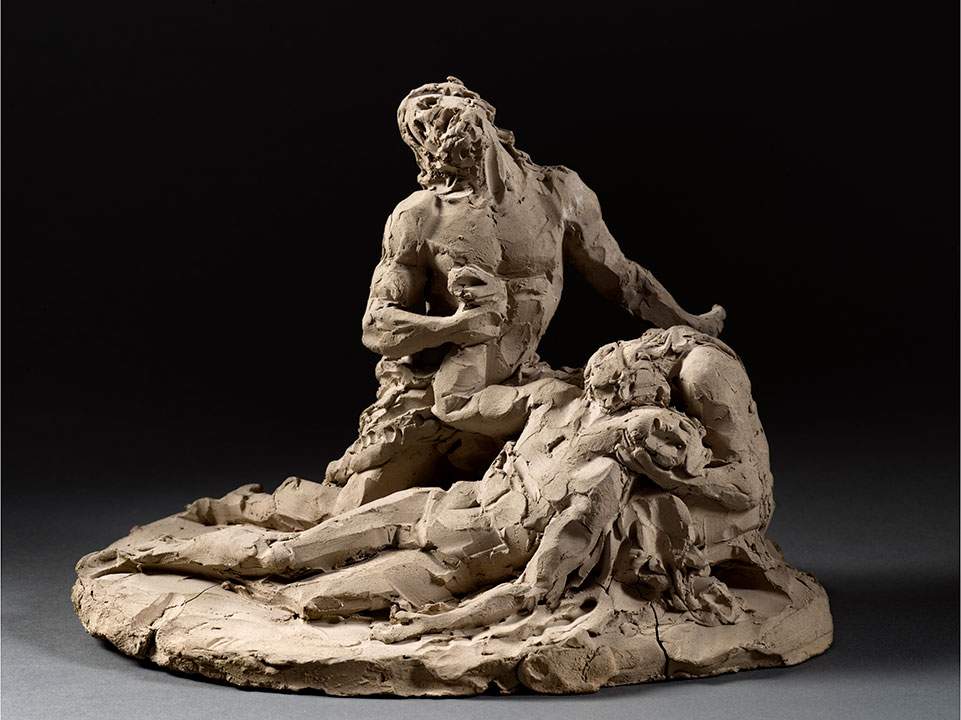Antonio Canova is leaving to tour the United States. Indeed, the great neoclassical artist is featured in a two-stage exhibition entitled Canova. Sketching in Clay, which brings first to the National Gallery in Washington (June 11 to Oct. 9, 2023) and then to theArt Institute of Chicago (Nov. 19, 2023 to March 18, 2024) a number of clay models that retain the touch of the artist’s hand, with the aim of offering a revealing glimpse into Canova’s imaginative and technical process.
This is the first exhibition in more than 50 years to focus on these clay sketches, arriving from the Museo Gypsotheca Antonio Canova in Possagno, the artist’s hometown. Also present are several plaster casts and marbles that are directly related to his terracottas. The exhibition, curated by C.D. Dickerson III, senior curator of European and American Art at the National Gallery and curator of European Paintings and Sculpture at the Art Institute of Chicago, is a focus on the creative process behind Canova’s works. Not only did the Venetian artist find clay extremely useful in the creation of his marble sculptures, but he also delighted in modeling it and was particularly passionate about sculpting in this material. He used clay in a variety of ways: to explore his ideas in three dimensions, to present his designs to patrons in the form of more finished models, to create larger models to help him refine the details of his designs, and to produce the final full-scale models that were then reproduced in plaster. He and his assistants translated the plaster models into marble through a mechanical system that allowed him to be prolific while maintaining the highest quality standards for his works. Marked by quick impressions of his fingers and tools, his models have an entirely different character from his marbles, finished in a way that hides any trace of the artist’s hand.
The exhibition in Washington is organized into three thematic sections: myths and legends, faith and monuments, and portraits. Highlights include models that trace Canova’s artistic origins in Venice and his early commissions in Rome, particularly his Religion and other studies for monuments to Clement XIII and Clement XIV; models for Amore e Psiche, one of his most fascinating sculptures, and for his masterpiece The Three Graces; and the spectacular marble of Napoleon’s mother, Letizia Ramolino, surrounded by three models that prepared him. Canova also explored grief in several works, from the marble models of the penitent Magdalene to Adam and Eve mourning the dead Abel, three heartbreaking models made toward the end of his life.
By presenting Canova’s preparatory models alongside some of his most prized marbles, the exhibition aims to invite the public to reflect on how an artist known for the refined perfection of these sculptures could develop them from such an expressive and immediate modeling style. These clay sketches show us the artist’s hand, from his distinctive gestures to his fingerprints. The exhibition thus explores Canova’s process, detailing how he designed in clay and how he went from sketch to finished statue. After developing his ideas in clay (a step that is shown in a video made for the exhibition) Canova made larger and larger models that were then reproduced in plaster. Assistants would then copy the plaster onto marble, and Canova would finish it all.
“While his professional reputation has always been linked to marble, Antonio Canova’s clay models reveal a bold and more expressionistic side of his creative identity,” says Kaywin Feldman, director of the National Gallery of Art. “I would like to thank our funders for their willingness to share their valuable artwork, allowing us to present Canova’s works together. This project would not have been possible without the generosity of the Museo Gypsotheca Antonio Canova in Possagno, where his personal effects and studies-including 36 terracottas-were transferred after the artist’s death.”
The exhibition also has a 280-page catalog, published by the National Gallery of Art in association with the Art Institute of Chicago and distributed by Yale University Press, with new photographs by Luigi Spina. It is the first monograph devoted entirely to the clay models Canova made in preparation for his idealized, sensuous marble sculptures. In conjunction with this exhibition, extensive technical research was then conducted on some 40 of the 60 or so clay models that survive. The results reveal the steps Canova took in making his models, as well as the tool marks or modeling gestures that distinguish his style. The authors, experts in art history and conservation, focus on Canova’s terracottas,
The exhibition is organized by the National Gallery of Art in Washington, DC, and the Art Institute of Chicago. Major support is provided by the Annenberg Fund for International Art Exchange. Additional support is provided by the Embassy of Italy. Under the patronage of the National Committee for the Bicentennial Celebrations of the Death of Antonio Canova of the Ministry of Culture.
Image: Antonio Canova, Lamentation of Adam and Eve over the Body of Abel (c. 1818-1822; terracotta, 22 x 30 x 18 cm; Possano, Museo Gypsotheca Antonio Canova). Photo: Luigi Spina
 |
| Canova touring the U.S. for an exhibition of his terracotta models |
Warning: the translation into English of the original Italian article was created using automatic tools. We undertake to review all articles, but we do not guarantee the total absence of inaccuracies in the translation due to the program. You can find the original by clicking on the ITA button. If you find any mistake,please contact us.